Getting Inspired by Removing the Obvious
This week, I have finished the first painting of the new series, enabled by the grant that I got from Arts Promotion Centre Finland. This is the second blog post of this project, see the first one here!
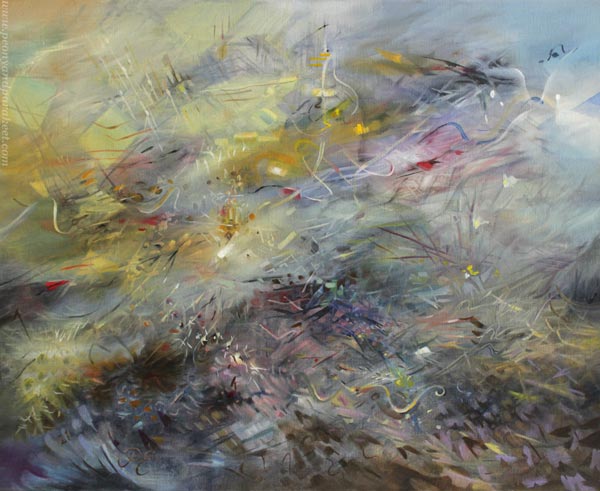
I wanted to combine two different styles for the painting.
Struggling with Differences
First, I wanted to honor Sandro Botticelli, a masterful painter from the Italian Renaissance, and include some of his colors and ornaments. I especially like the pastel colors in his paintings. Yellow ochre and ultramarine blue look beautiful in the mixtures. Botticelli’s painting The Madonna of the Pomegranate was my main inspiration for the color scheme. I also listened to Renaissance choir music and imagined how he felt when he painted and analyzed his work.
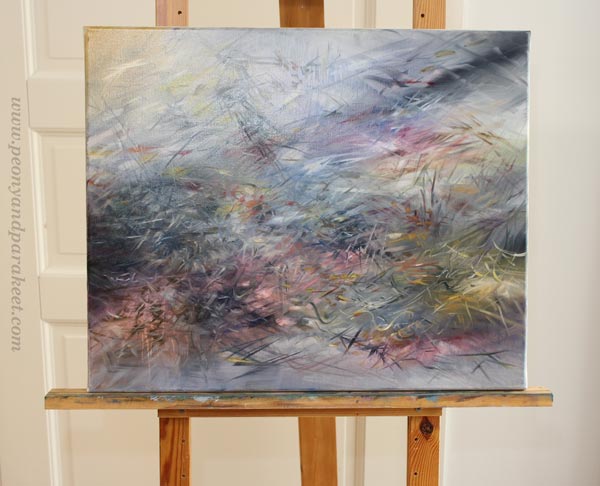
I also had another tutor, Wassili Kandinsky, from the 20th century. I reread his books On the Spiritual in Art and Point and Line to Plane and imagined him talking about releasing the inner sound of a shape.
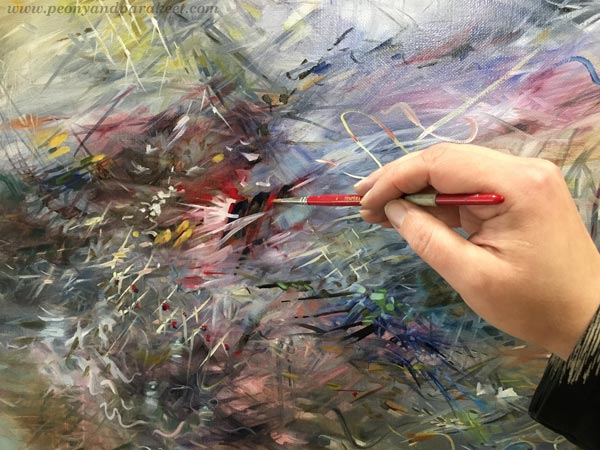
But knowledge and advice and all the left brain stuff can only help to a certain point. When focusing on facts and words, I lost not only Botticelli’s and Kandinsky’s voices but my own too. I ended up making too bold moves and the spirit of the painting was lost.
Indoors – Outdoors
Fortunately, I had to take many sittings because dogs require pauses. It feels that I am constantly moving from indoors to outdoors nowadays!
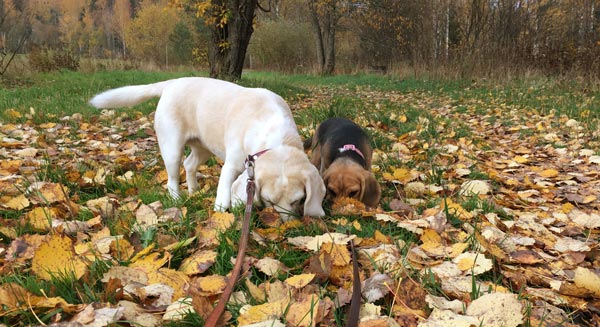
Then it hit me, that painting, life, and spirituality are not about defining two states like outdoors and indoors. I can bring indoor elements like lamps with outdoor elements like trees. Botticelli broke the division by painting decorative flowers that continued from the grass to clothes.
Removing the Obvious Limitations
And if indoors and outdoors can be one, why not break other obvious limitations too – for example, combine science and beliefs in the same painting.
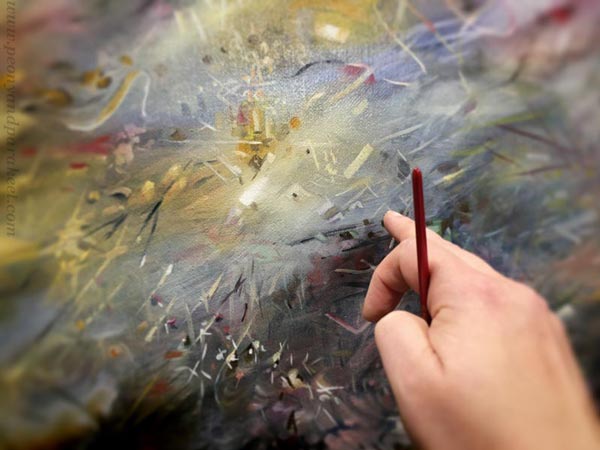
So I painted a chandelier, Botticelli’s divine rays, a light bulb to honor Thomas Edison, a tiny cross to represent spiritual beliefs. I allowed one association to freely lead to another. My mind was exploding when I thought about light and its all interpretations.
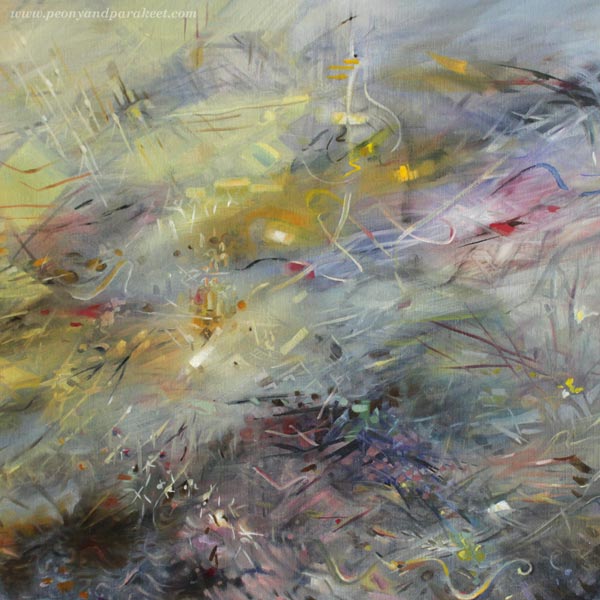
Some people collect chandeliers, others search for a proper lightbulb in a supermarket. Sometimes we believe in science, other times we have different beliefs. Some see angels instead of flowers. Sometimes we need darkness to see light, and other times we may need more light to the lightness. Light can be glitter that saves the day or a more permanent feeling of hope. Art and spirituality don’t have to be separate from the rational and mundane, but they can be the glue between the inner and outer world. We can remove the obvious, and express the diverse experience instead of a single thing.
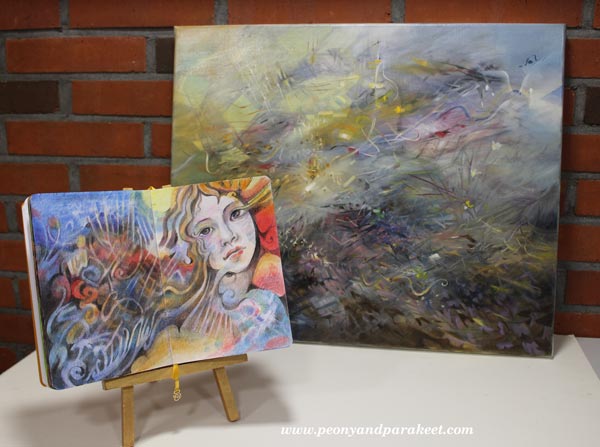
Releasing the Inner Sound
In the light of removing the obvious, Kandinsky’s idea of releasing the inner sound can simply mean this:
Make subtle changes to an element
so that the obvious interpretation becomes vaguer
and a variety of new ideas are raised.
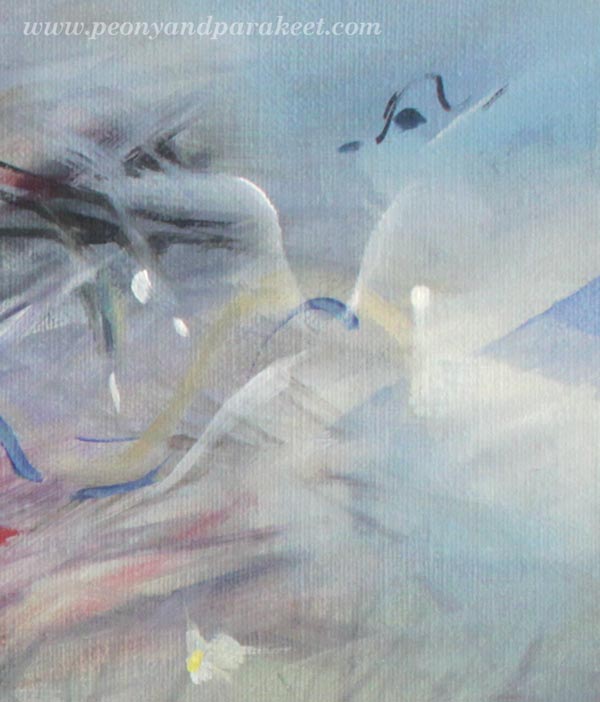
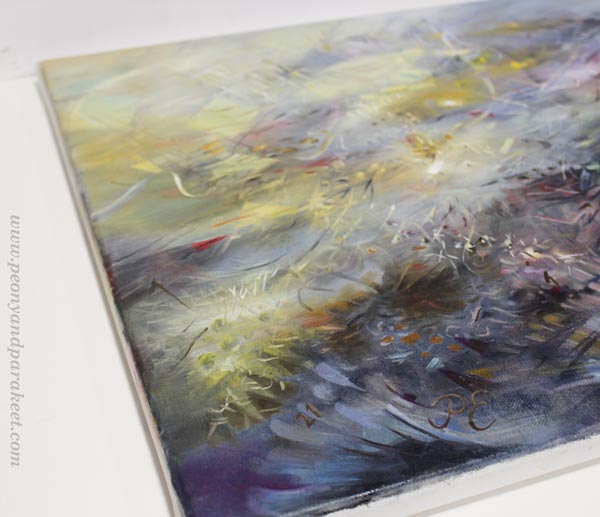
What could “removing the obvious” mean to you? Tell me what you think!
Art Journey to Spirituality – Let’s Begin!
This week, we will begin a journey to express spirituality through art. Think about this and the upcoming blog posts as an interactive diary that you can adapt to your own work. The idea is to question and examine first and then intuitively find more truths.
Introduction to the Journey
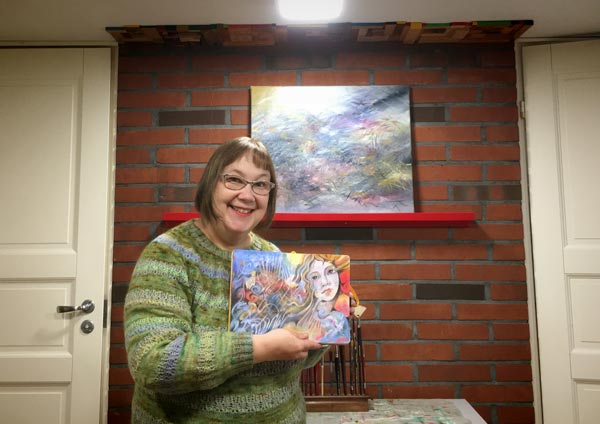
As I wrote last week, I have got a grant from The Arts Promotion Centre Finland to create a series of paintings and write about the process.
In the series, I will dive deeper into Wassily Kandinsky’s idea of unleashing the inner sound of form (check the class Floral Freedom). I will also examine the art of the 16th and 17th centuries and get influences from there. My paintings will express spirituality, but they won’t be subject to any particular worldview or religion.
I will work both systematically and intuitively. I will create studies in my colored pencil diary that help me to build a formal language for each intuitive painting (check the class Intuitive Coloring).
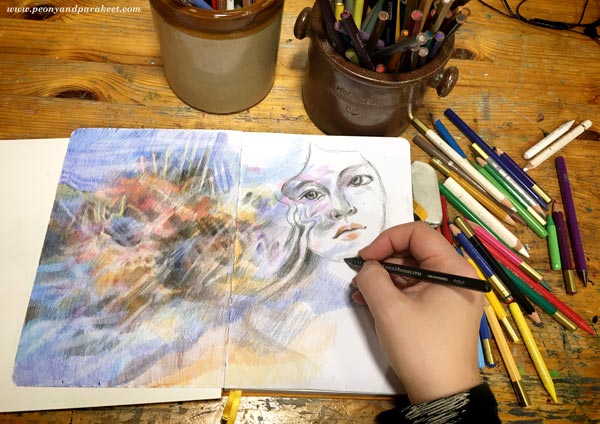
I hope this 3-month project inspires you to start an art journey to your spirituality! Take a bit of time for it every week, have a sketchbook or an art journal, maybe create a few paintings too. You can also write down names, quotes, and personal thoughts. The idea is to keep ideas and associations flowing while art gets created!
I hope to hear your thoughts in the comments! If you want more social support, purchase any of my classes and you will get to my community Bloom and Fly for the rest of the year. We will have discussions about this project in the Facebook group of the community.
Ok, let’s begin!
How to Define Spirituality
First, let’s ask what spirituality is! Google replies:
“the quality of being concerned with the human spirit or soul as opposed to material or physical things.”
But as artists, we don’t have to obey any general answer. Rather, it’s expected that our art expresses our personal points of view. I also believe that any word can start a journey. The first answer is just a ticket, and the answers get deeper piece by piece.
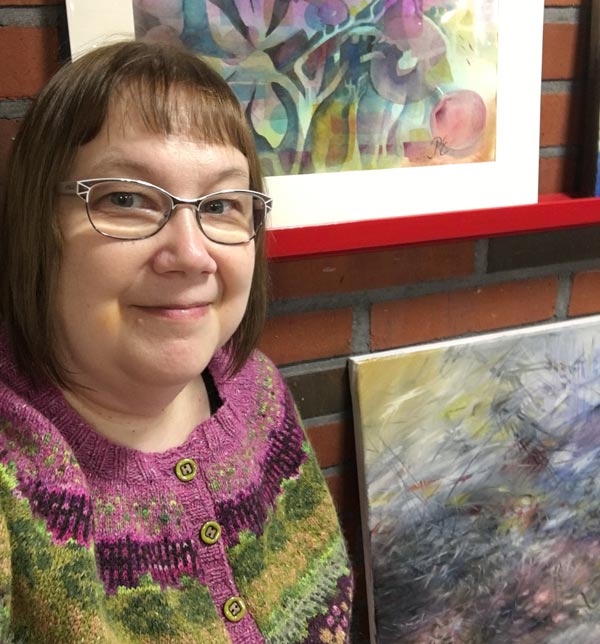
Connection, empathy, and understanding – I imagine squeezing these three words in my hands like they would be paper tokens. I want to connect with artists in the past, empathize with their shapes, and understand how to go deeper. But instead of getting overly serious, I also want to learn to play. The goal is to create a spectrum rather than one truth.
What three words would you pick as your tickets to a spiritual journey?
Meeting Sandro Botticelli
The first painting of the series will be the one that started last July. It was then black and white, an underpainting only.
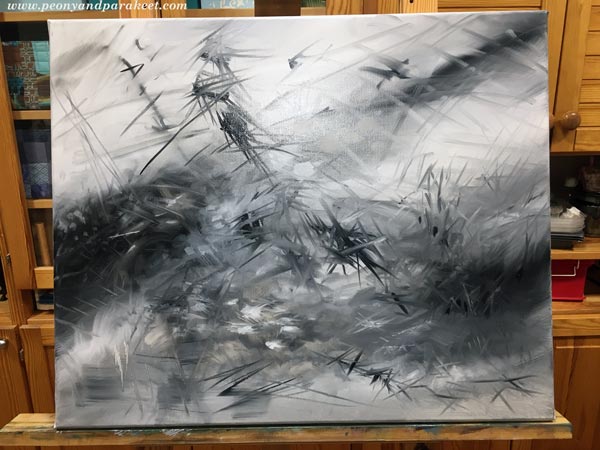
This week I got back to it and brought in more colors.
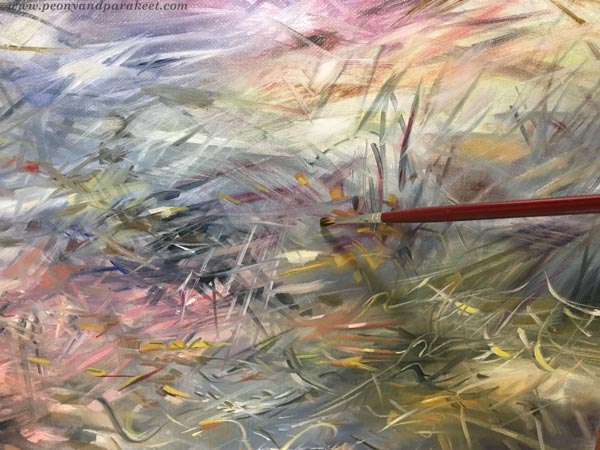
Even if the painting is not finished yet, the colors took me to meet the first companion of my journey – Sandro Botticelli.
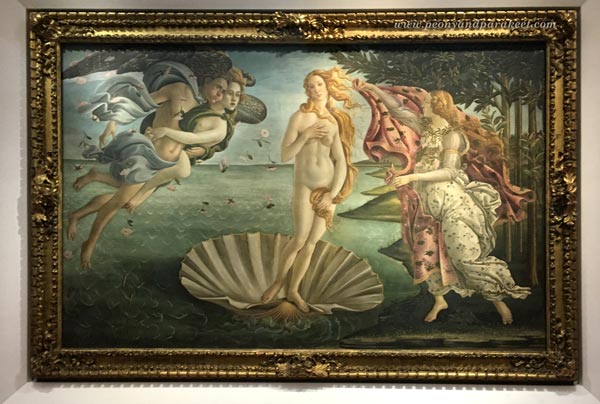
Sandro Botticelli (1445-1510) was an Italian painter. I have seen his famous paintings Primavera and The Birth of Venus in the Uffizi Gallery, Florence, but many other pieces inspire me too.
Botticelli equals perfection in many ways. His shapes and lines are so flawlessly beautiful that they make me shiver. He didn’t paint alone but had apprentices. I wonder what it would be like to work in his workshop – trying to paint a curvy line that would get his approval! Botticelli was born again in the 1850s when the Pre-Raphaelites found him. The easy way to fall in love with Botticelli’s work is to look at, for example, Evelyn de Morgan’s (1855-1919) romantic ladies. After those, it’s easy to greet Sandro too.
Botticelli’s Spirituality
I made this little study of Botticelli’s style in colored pencils to examine how his shapes are. It’s often good to let the hand think instead of using only the mind.
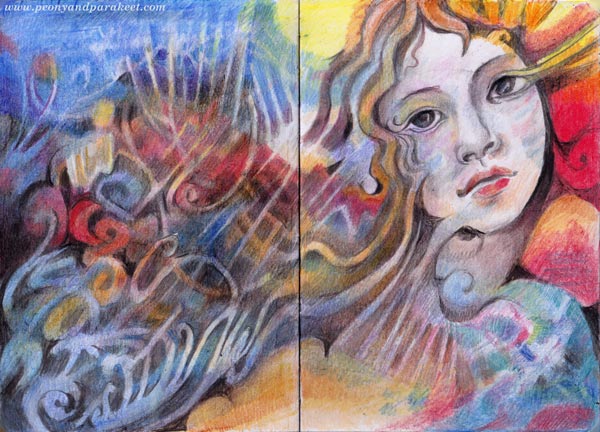
When I imagine discussions with Botticelli, he whispers out romantic mysteries. “Your stories would make great plays,” I tell him. But what interests me most is not the characters themselves, but how ornamental their speech is and how much in detail he describes their clothing and the overall setting.
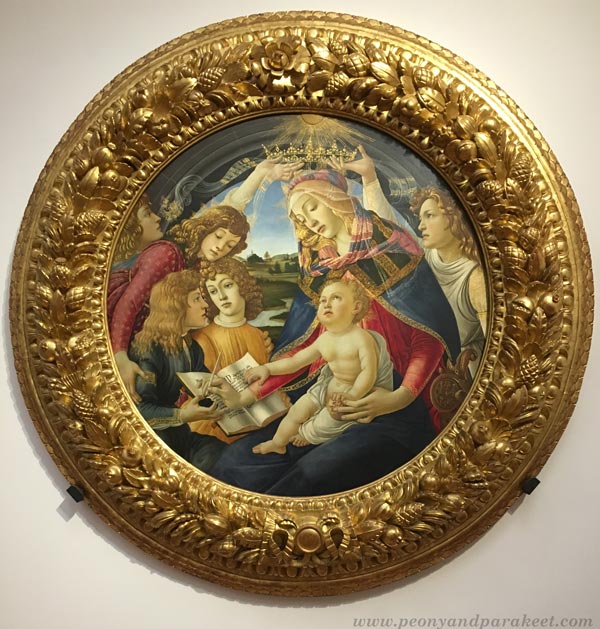
I think the spiritual in Botticelli is the way he empathizes with things. For example, how a thin vail looks like the extension of the soul. Or how the flowers that are on the ground continue on the dress and fly in the air. Sandro’s people look immersed in their surroundings.
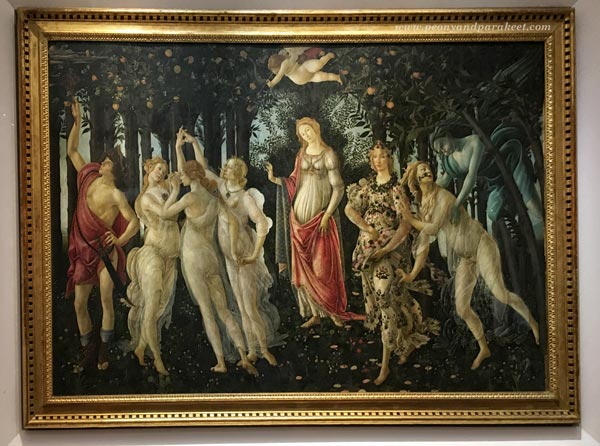
Like Wassily Kandinsky would say, they seem to be not watching something as outsiders but being an integral part of the overall experience. I hope that this understanding will somehow help me to finish the painting!
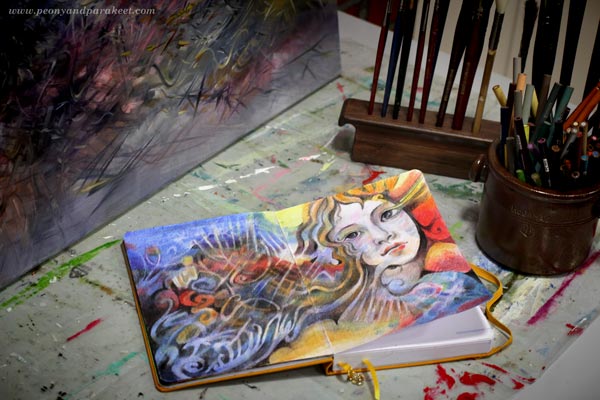
Tell me, who is the first companion in your art journey to spirituality? Botticelli or somebody else?
Colored Pencil Fantasy Art – From Sunnyland to Starryverse
This week, we go from happy and light to adventurous and dark. This is how adventurous colored pencil fantasy art is born!
Imagine walking in a sunnyland through sunshine meadows, seeing pinks, fresh greens, smiling yellows, and trotting happily along a path that feels pleasantly warm and soft. And then, suddenly, something dark hits you, and you no longer feel the ground. Should you fight back to the sunnyland? Or try to figure out what this new place is that feels like a deepwater or a starryverse? That’s what happened to me with colored pencils.
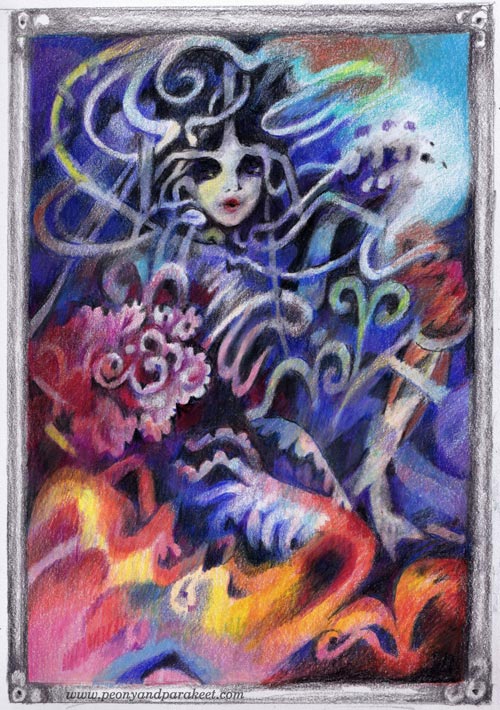
I have made drawings for the upcoming class Intuitive Coloring, and it’s been fun. Happy pictures have filled my studio, and bright colors have got shorter.
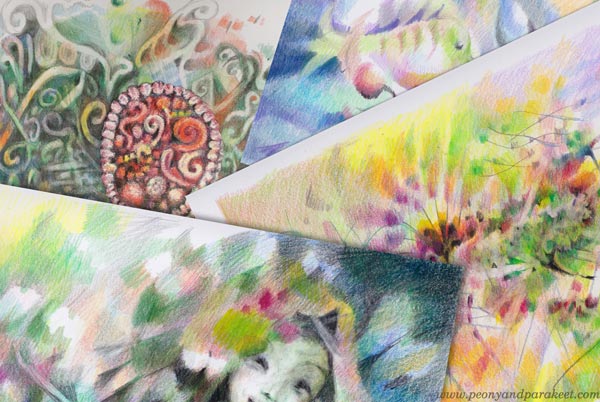
But then, boom! Somebody wanted to come out, and she was not a smiley face.
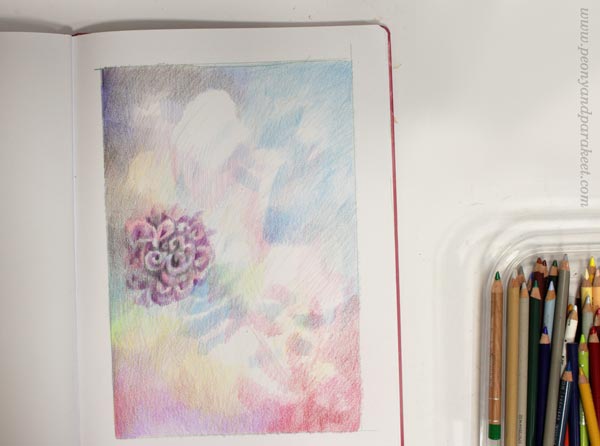
“Let’s make you smile,” I told her. “Let’s take away the darkness, and you will fit better with others. So, here’s a rose that will guide our path back to the sunnyland.” But she didn’t stay behind the flower, and her eyes refused to smile.
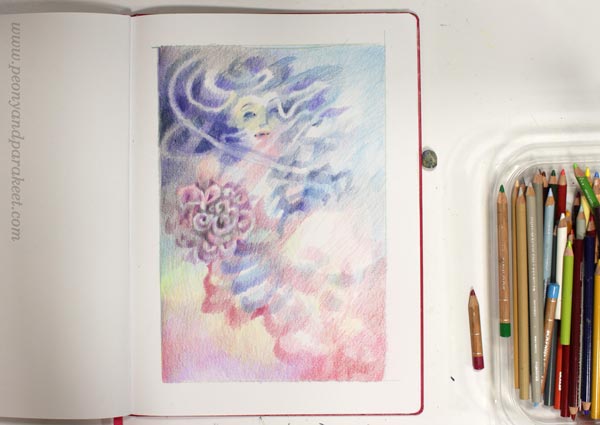
It’s easy to follow intuition when she plays with the butterflies promising good things and much harder when she takes you to a less defined zone. For example, can I let go of not drawing an arm or a leg? Not that I would specifically enjoy drawing them, but because humans do usually have hands and feet.
Colored Pencil Fantasy Art
I didn’t know what was what, but I let her appear anyway.
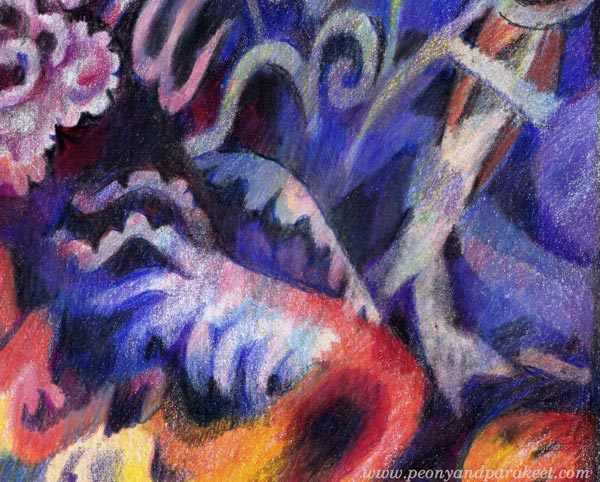
While spending time in this strange place, it started to feel exciting and inviting.
I found myself thinking: why do I give restrictions to my imagination when pens and paper don’t set them? When imagination hits our intuition – or is it vice versa – why not just let go and see who’s the little monster that wants to come out.
I want to fit and belong, and yet, it’s not always so.
My art and my expectations don’t always meet. But the dark starryverse feeds the bright sunnyland, and I need both to keep the sun shining and fairies moving forward.
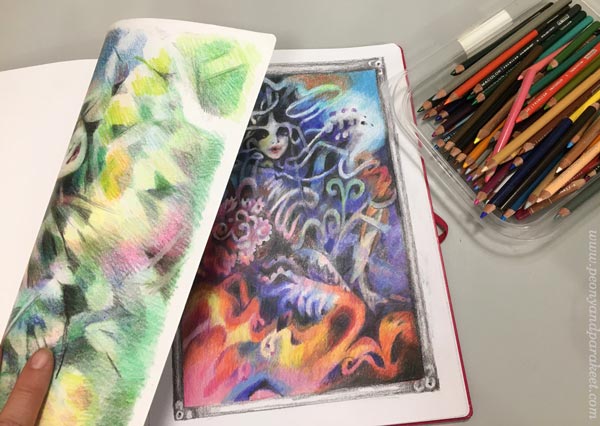
How’s this with your art?
Coloring with the Inner Child
This week, let’s get excited about colored pencils and embrace the inner child!

I used to play with colored pencils as a child. Not just use them for drawing and coloring, but also treat them as dolls. A brand was their surname. I had Caran d’Aches, Derwents, Lyras, … My sister was coloring while I played with the pencils. So, it often happened that someone precious got blunt and tired in my sister’s hands and needed some loving care after coming back to my play.
Colored Pencils – Do Yours Need Some TLC?
Some weeks ago, when taking the jars of colored pencils out of the cabinet, I sighed: “I want a new set; these are getting quite short.” But if I look at my diverse selection of pencils in child’s eyes, all they needed was some sharpening and close observation – what is the family name, who could this little pencil be?

I picked a tray for a smaller selection so that I can get to know them again: “Hello, Cretacolor! Let’s work together!” And then, I made some mixed selections and drew more, and it felt as much fun as a brand new set. I also found some small sheets of paper, and it felt as satisfying to fill them as it is to knit with leftover yarns.

Coloring with the Inner Child
The same difference in attitude goes for drawing and coloring. As adults, we may color some random shapes, feel disappointed in their composition, and try forcing the image out. Or we can change the rational to irrational. Then, like a child sees a person in a pencil, we see life in a simple shape. What could be its counterpart, and where could be its reflection? And could it remain blurry – breathe better without outlines?

Instead of controlling the big picture, we can reveal the personality behind each shape. The image will then grow slowly but naturally, and we get to release our inner child.
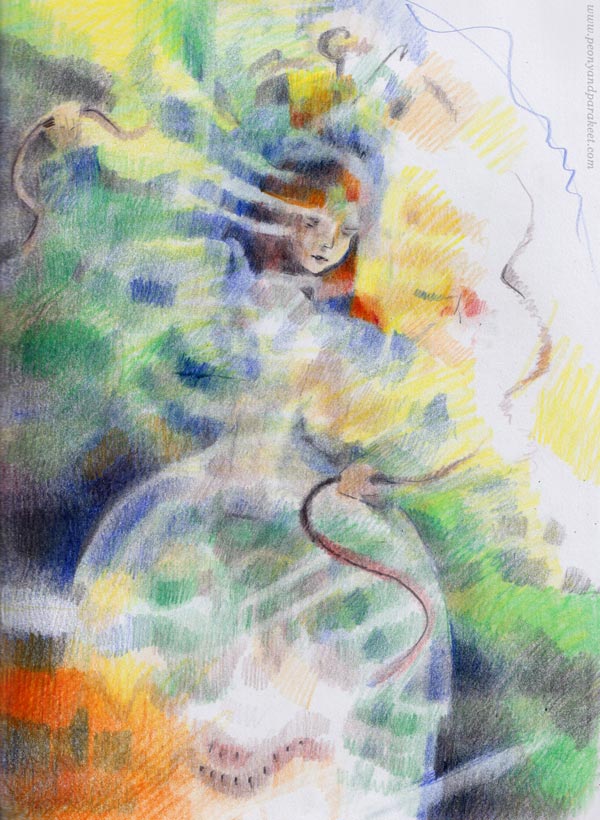
This post includes sneak peeks of my upcoming class Intuitive Coloring – Stay tuned!